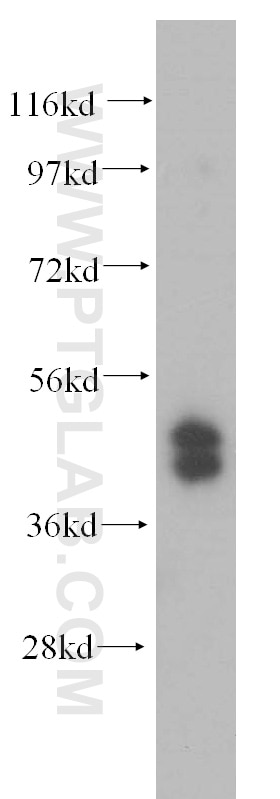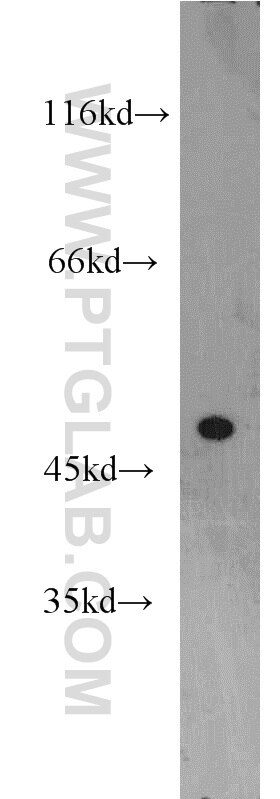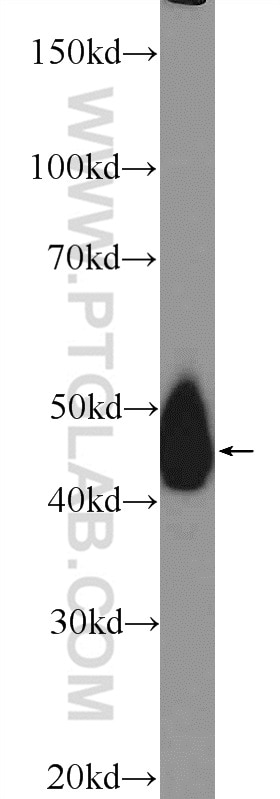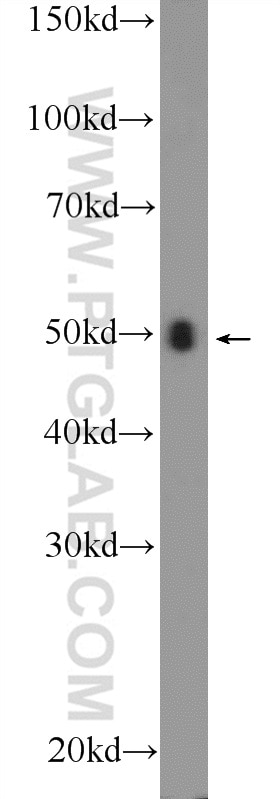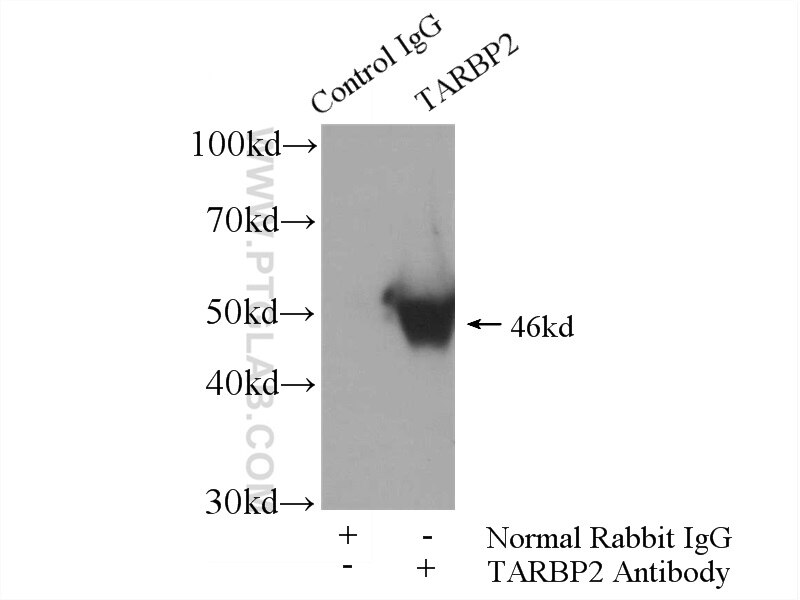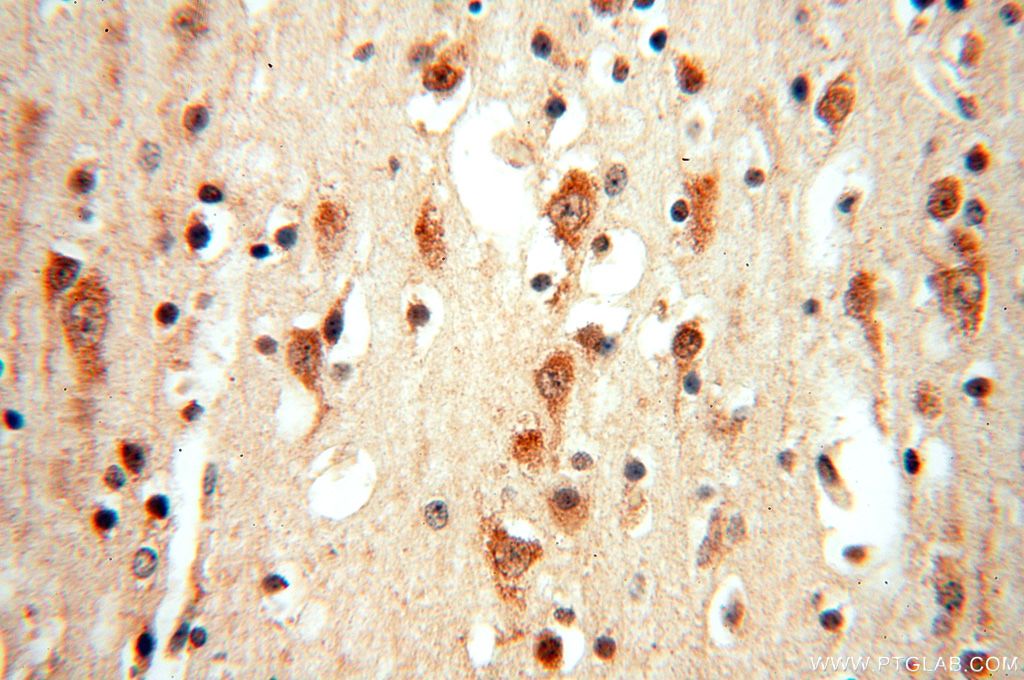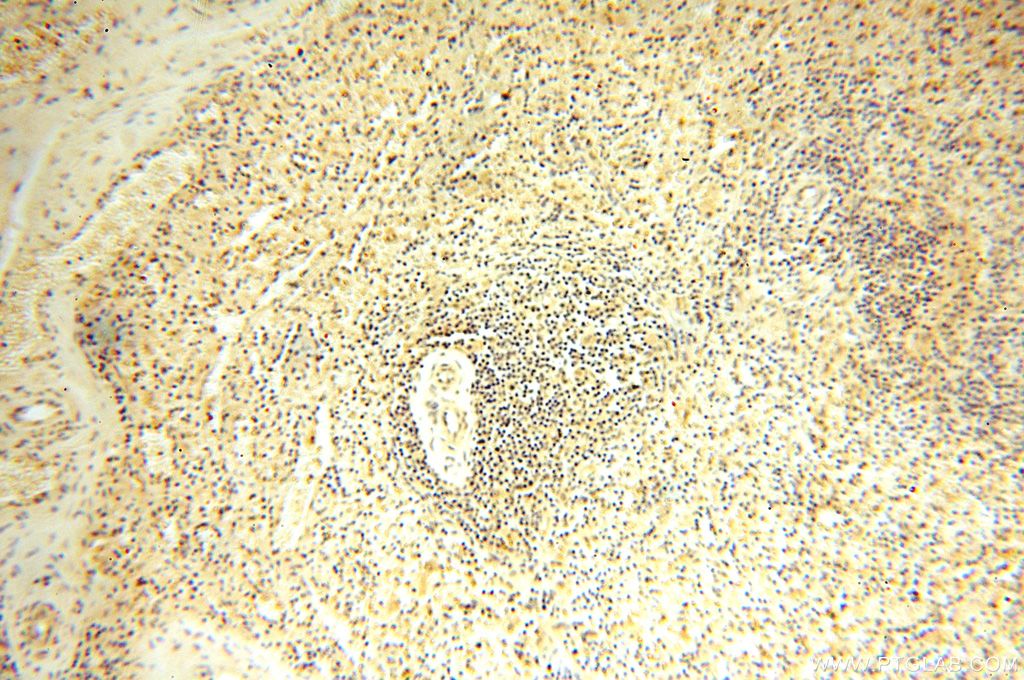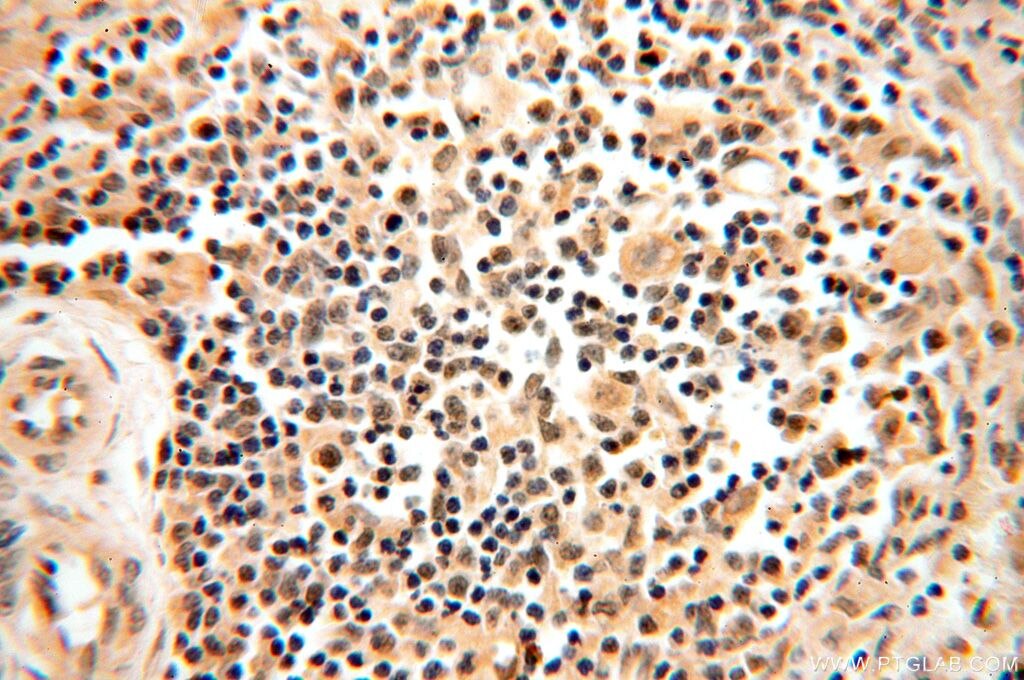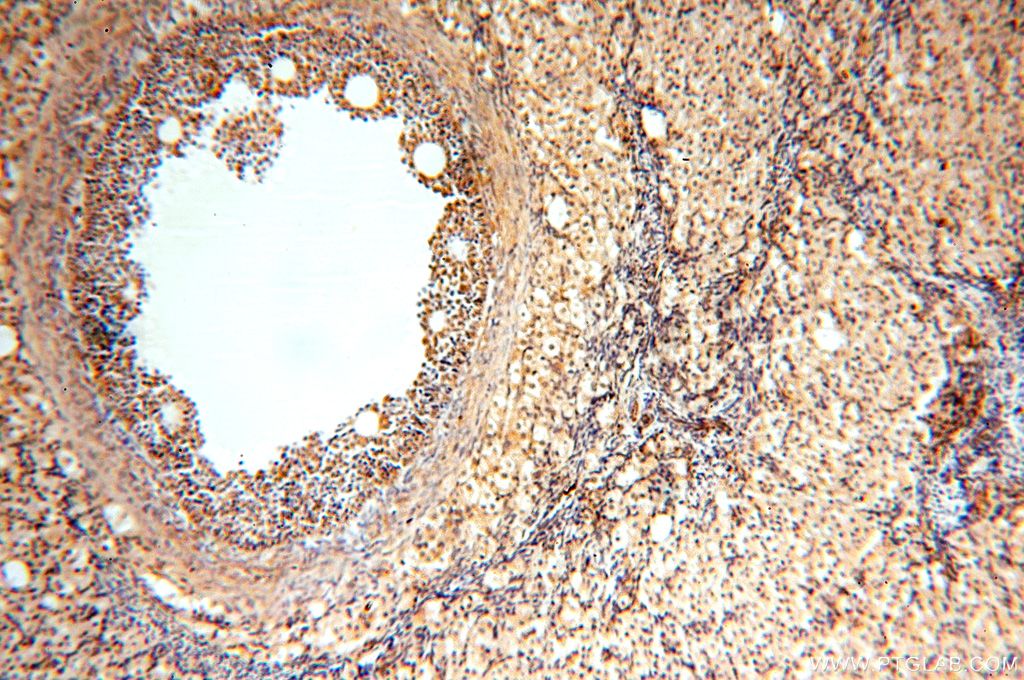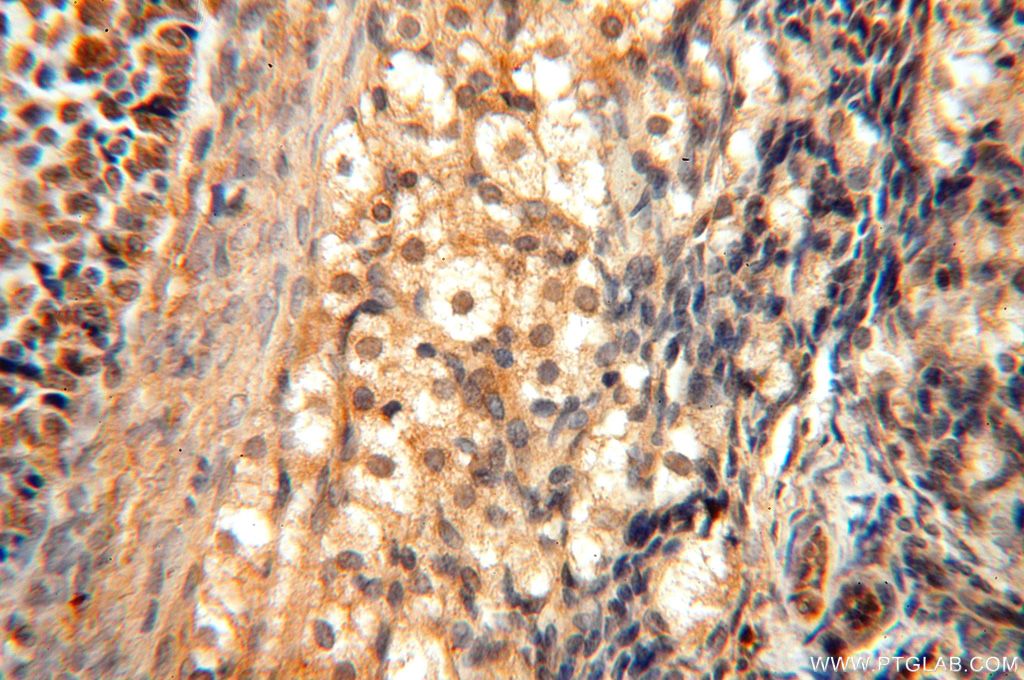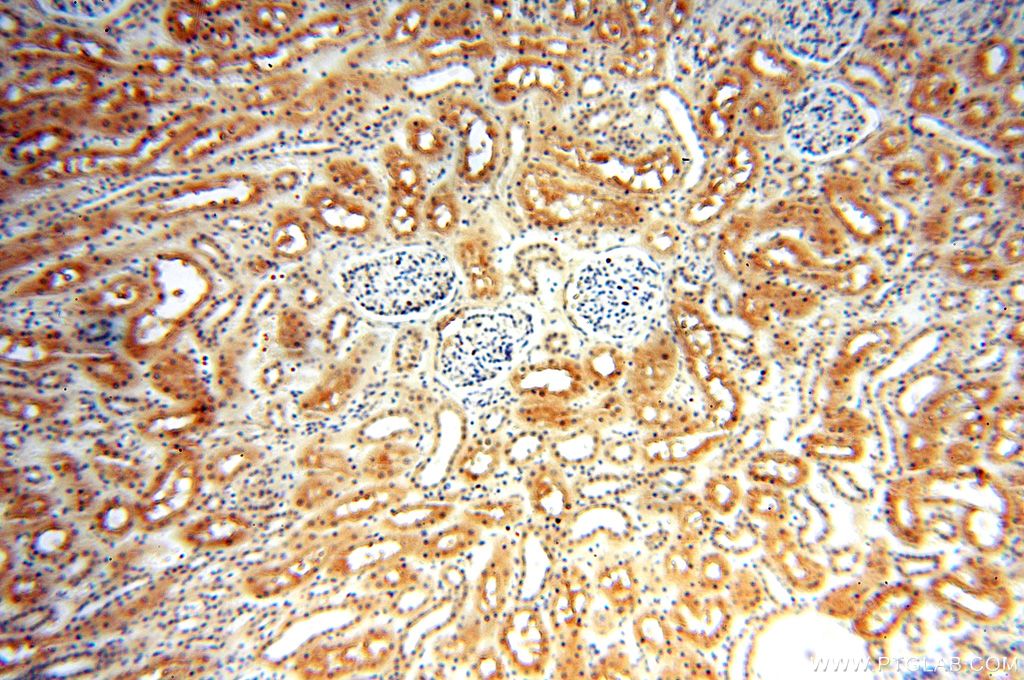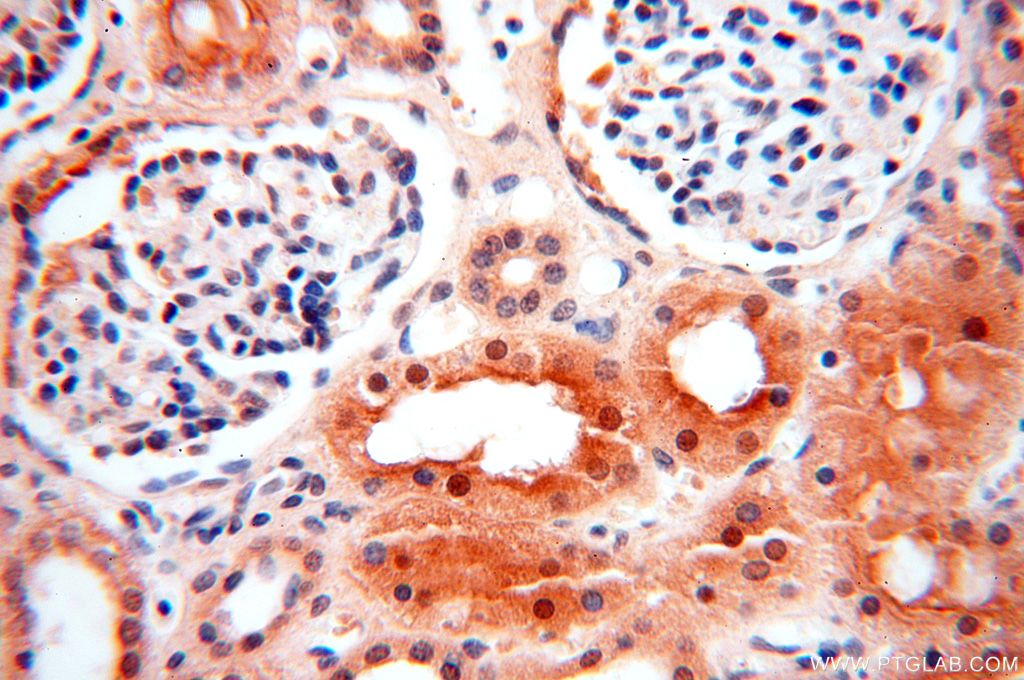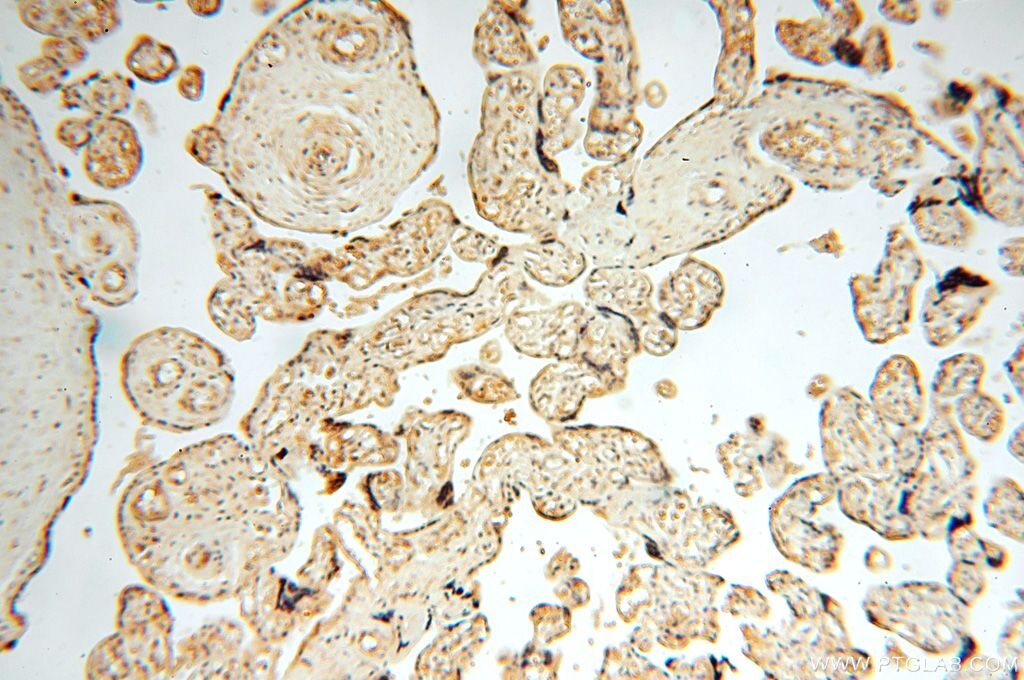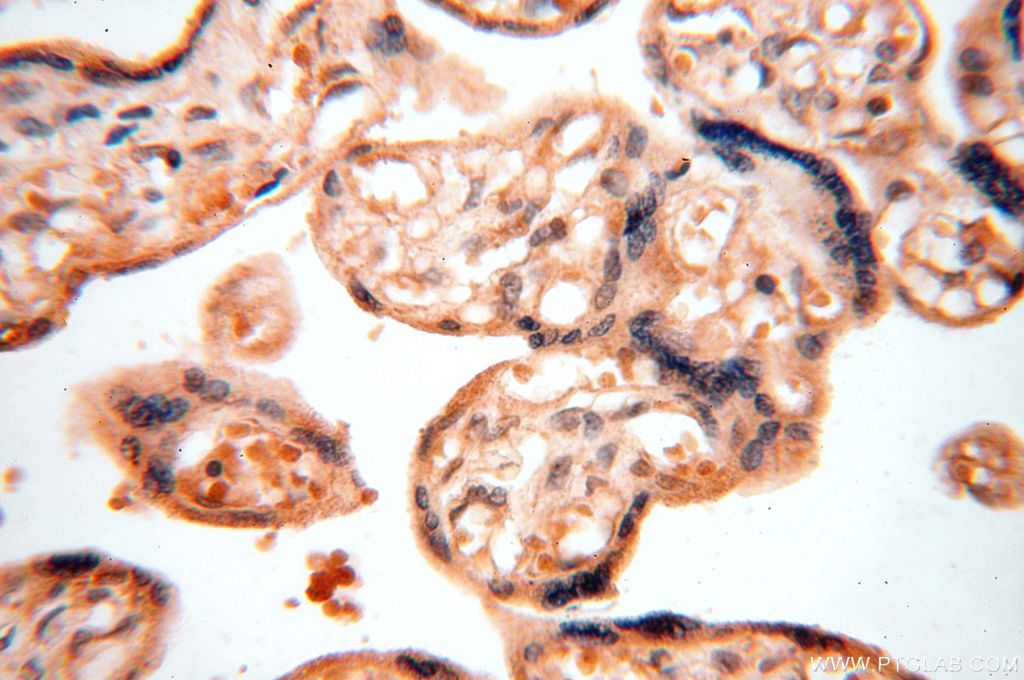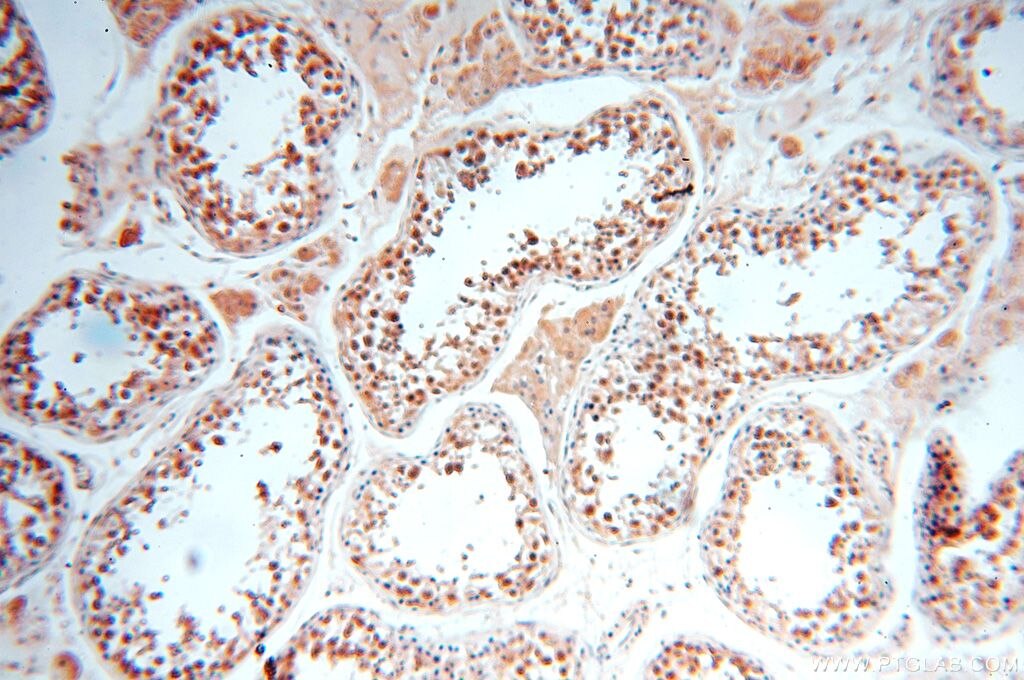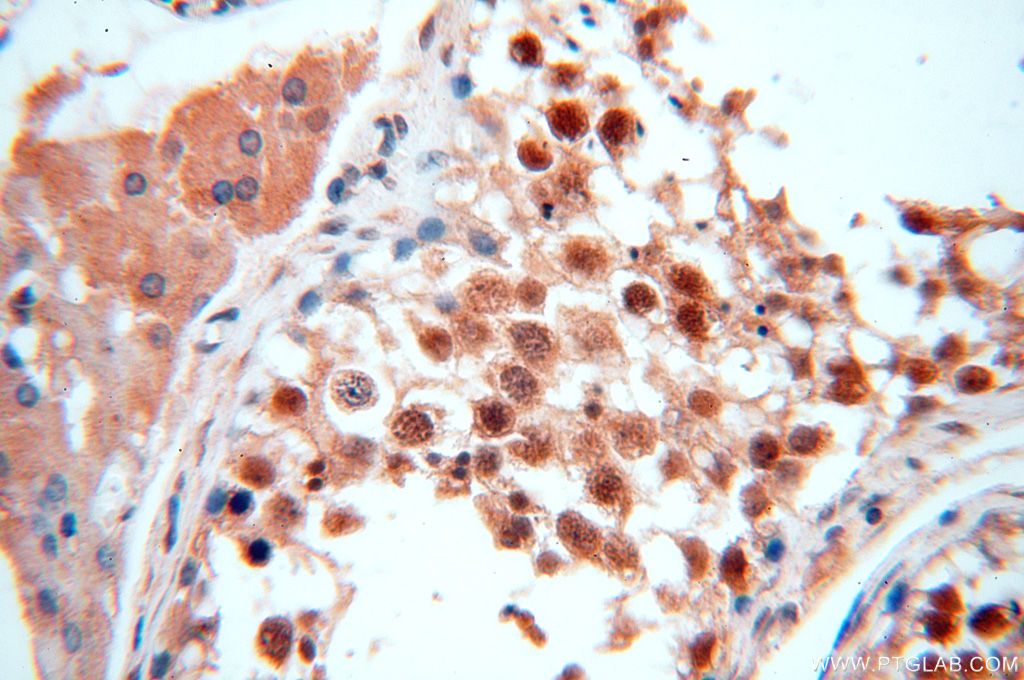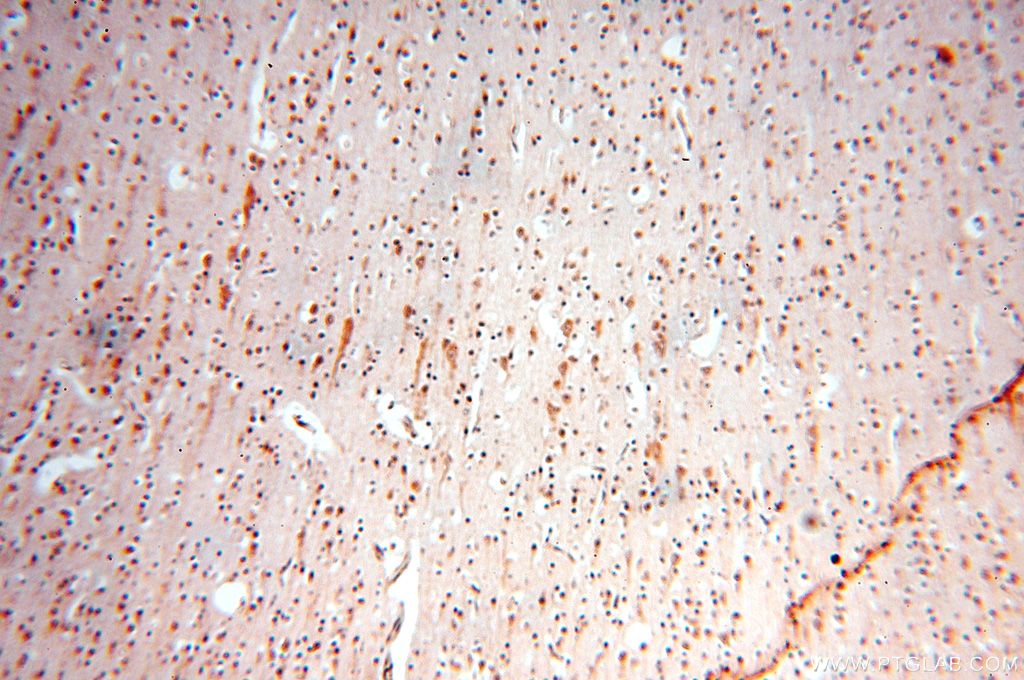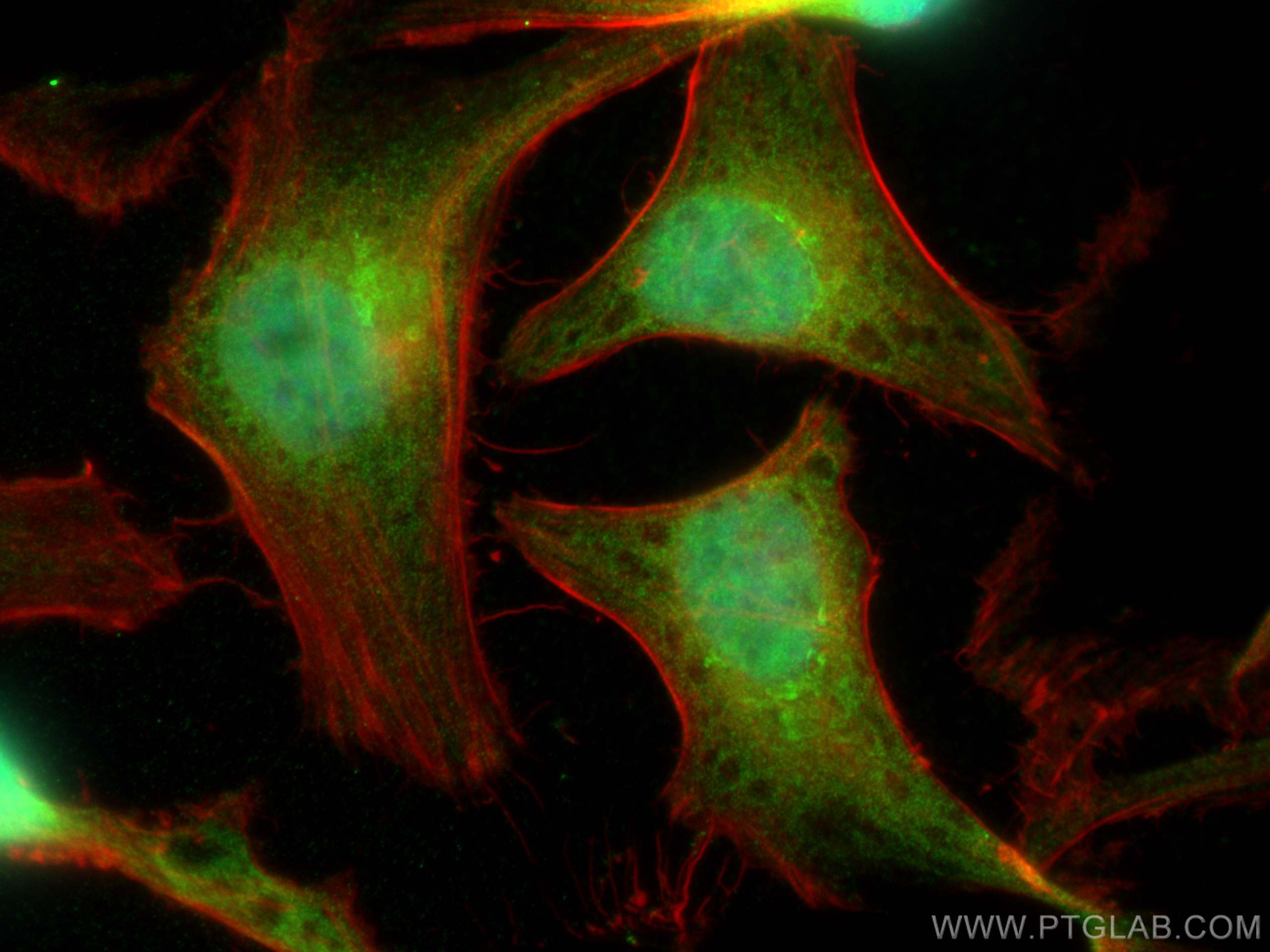- Phare
- Validé par KD/KO
Anticorps Polyclonal de lapin anti-TRBP
TRBP Polyclonal Antibody for WB, IHC, IF/ICC, IP, ELISA
Hôte / Isotype
Lapin / IgG
Réactivité testée
Humain, rat, souris
Applications
WB, IHC, IF/ICC, IP, RIP, ELISA
Conjugaison
Non conjugué
N° de cat : 15753-1-AP
Synonymes
Galerie de données de validation
Applications testées
| Résultats positifs en WB | cellules HepG2, tissu hépatique de souris, tissu splénique de souris |
| Résultats positifs en IP | tissu hépatique de souris |
| Résultats positifs en IHC | tissu cérébral humain, tissu ovarien humain, tissu placentaire humain, tissu rénal humain, tissu splénique humain, tissu testiculaire humain il est suggéré de démasquer l'antigène avec un tampon de TE buffer pH 9.0; (*) À défaut, 'le démasquage de l'antigène peut être 'effectué avec un tampon citrate pH 6,0. |
| Résultats positifs en IF/ICC | cellules HeLa, |
Dilution recommandée
| Application | Dilution |
|---|---|
| Western Blot (WB) | WB : 1:500-1:2000 |
| Immunoprécipitation (IP) | IP : 0.5-4.0 ug for 1.0-3.0 mg of total protein lysate |
| Immunohistochimie (IHC) | IHC : 1:20-1:200 |
| Immunofluorescence (IF)/ICC | IF/ICC : 1:200-1:800 |
| It is recommended that this reagent should be titrated in each testing system to obtain optimal results. | |
| Sample-dependent, check data in validation data gallery | |
Applications publiées
| KD/KO | See 5 publications below |
| WB | See 22 publications below |
| IF | See 2 publications below |
| IP | See 4 publications below |
| RIP | See 2 publications below |
Informations sur le produit
15753-1-AP cible TRBP dans les applications de WB, IHC, IF/ICC, IP, RIP, ELISA et montre une réactivité avec des échantillons Humain, rat, souris
| Réactivité | Humain, rat, souris |
| Réactivité citée | Humain, souris |
| Hôte / Isotype | Lapin / IgG |
| Clonalité | Polyclonal |
| Type | Anticorps |
| Immunogène | TRBP Protéine recombinante Ag8255 |
| Nom complet | TAR (HIV-1) RNA binding protein 2 |
| Masse moléculaire calculée | 39 kDa |
| Poids moléculaire observé | 43-46 kDa |
| Numéro d’acquisition GenBank | BC005860 |
| Symbole du gène | TRBP |
| Identification du gène (NCBI) | 6895 |
| Conjugaison | Non conjugué |
| Forme | Liquide |
| Méthode de purification | Purification par affinité contre l'antigène |
| Tampon de stockage | PBS with 0.02% sodium azide and 50% glycerol |
| Conditions de stockage | Stocker à -20°C. Stable pendant un an après l'expédition. L'aliquotage n'est pas nécessaire pour le stockage à -20oC Les 20ul contiennent 0,1% de BSA. |
Informations générales
TARBP2 is a component of the RISC loading complex (RLC), also known as the micro-RNA (miRNA) loading complex (miRLC). Within the complex, TARBP2 and DICER1 are required to process precursor miRNAs (pre-miRNA) to mature miRNA and then load them onto EIF2C2/AGO2. It may has a role in the production of short interfering RNAs (siRNAs) from double-stranded RNA (dsRNA) by DICER1. Otherwise, it binds to the HIV-1 TAR RNA that is located in the long terminal repeat (LTR) of HIV-1, and stimulates translation of TAR-containing RNAs. The endogenous TRBP that was present in HEK293 cells, with apparent molecular masses of 43-46 kDa, are expressed in human cells. (PMID: 16142218)
Protocole
| Product Specific Protocols | |
|---|---|
| WB protocol for TRBP antibody 15753-1-AP | Download protocol |
| IHC protocol for TRBP antibody 15753-1-AP | Download protocol |
| IF protocol for TRBP antibody 15753-1-AP | Download protocol |
| IP protocol for TRBP antibody 15753-1-AP | Download protocol |
| Standard Protocols | |
|---|---|
| Click here to view our Standard Protocols |
Publications
| Species | Application | Title |
|---|---|---|
Mol Cell Nuclear TARBP2 Drives Oncogenic Dysregulation of RNA Splicing and Decay.
| ||
Nat Commun Hypoxia regulates overall mRNA homeostasis by inducing Met1-linked linear ubiquitination of AGO2 in cancer cells. | ||
Nucleic Acids Res S6K2-mediated regulation of TRBP as a determinant of miRNA expression in human primary lymphatic endothelial cells.
| ||
J Med Chem Identification of a Novel TAR RNA-Binding Protein 2 Modulator with Potential Therapeutic Activity against Hepatocellular Carcinoma. |
